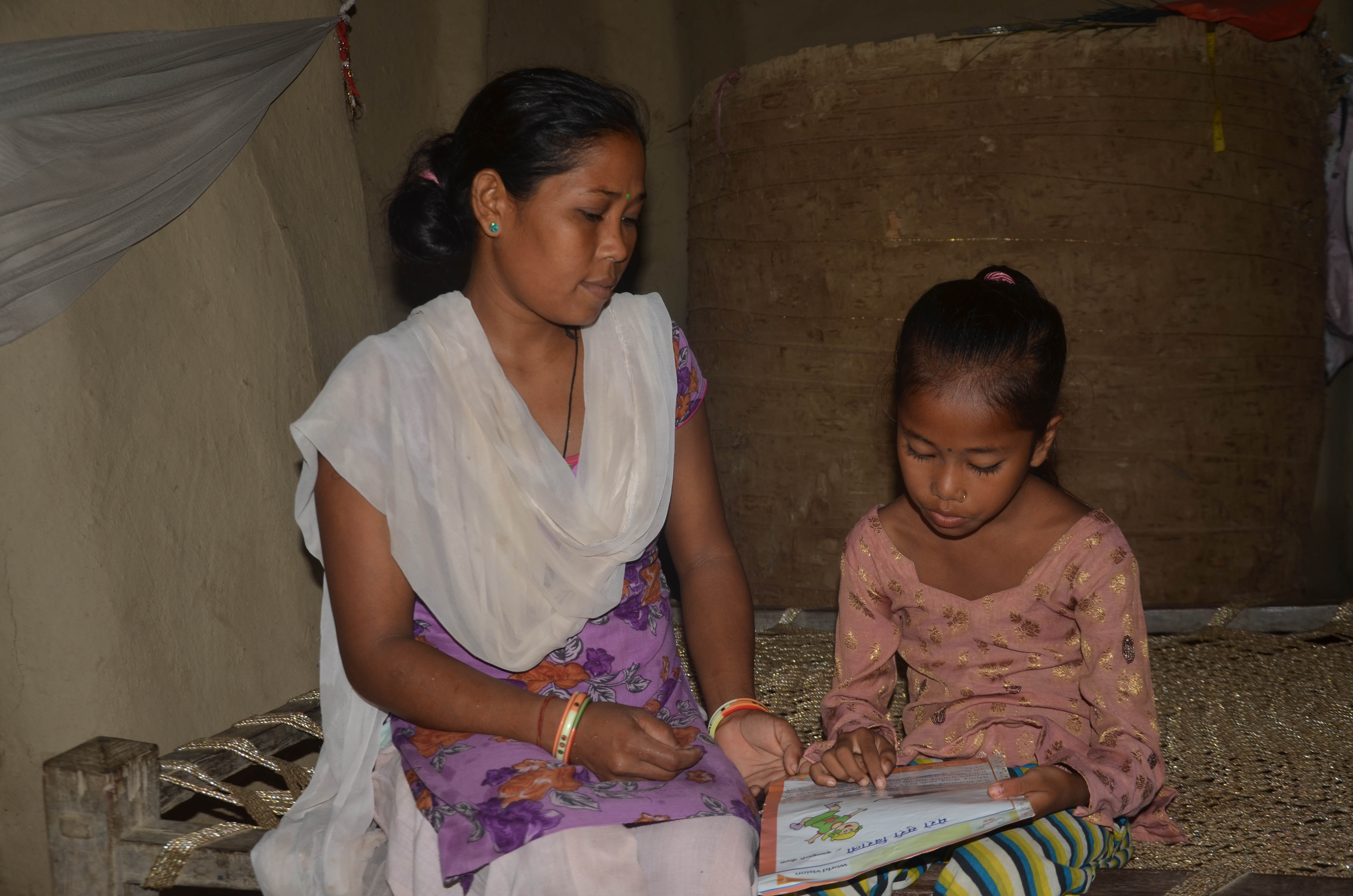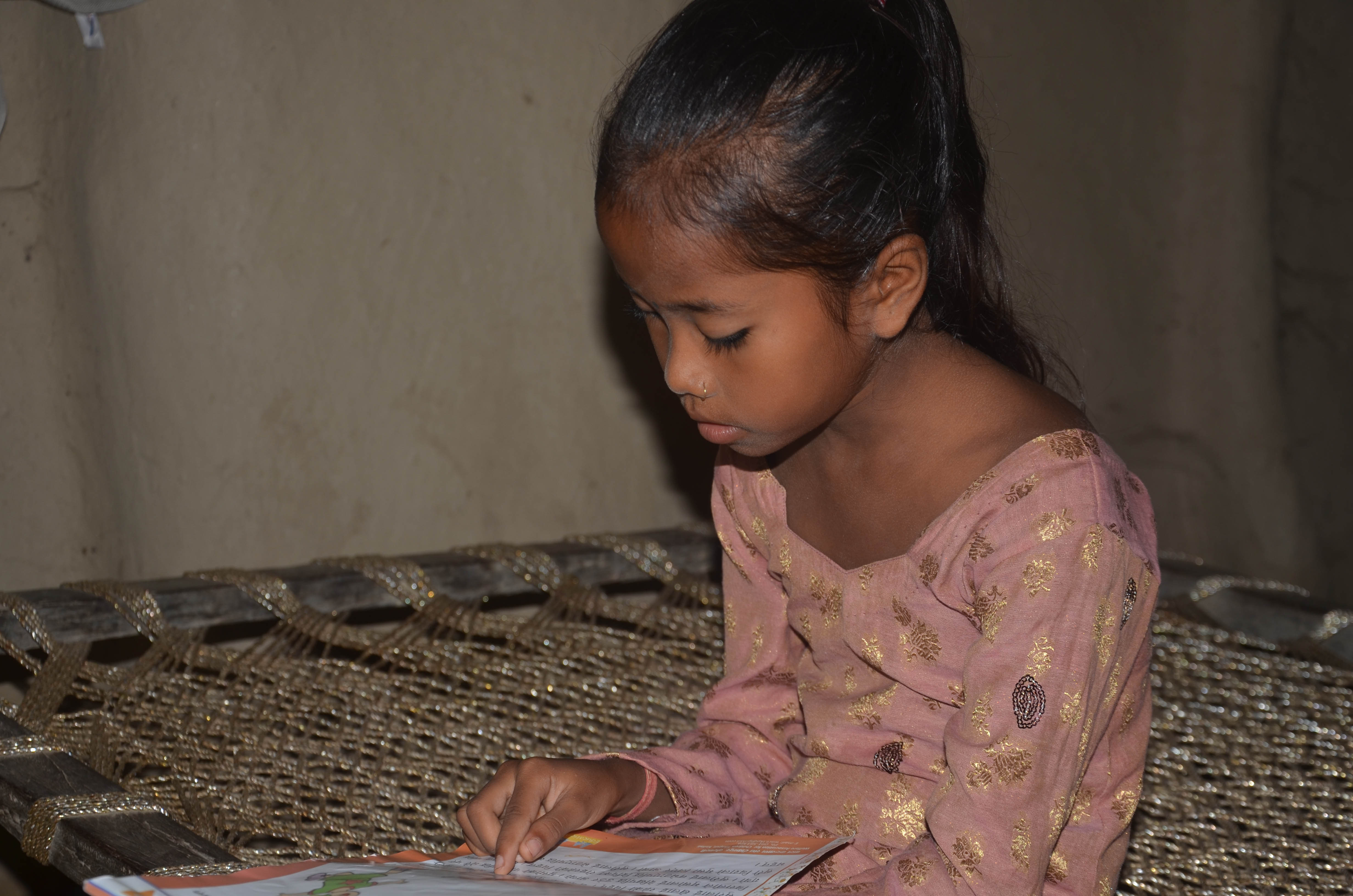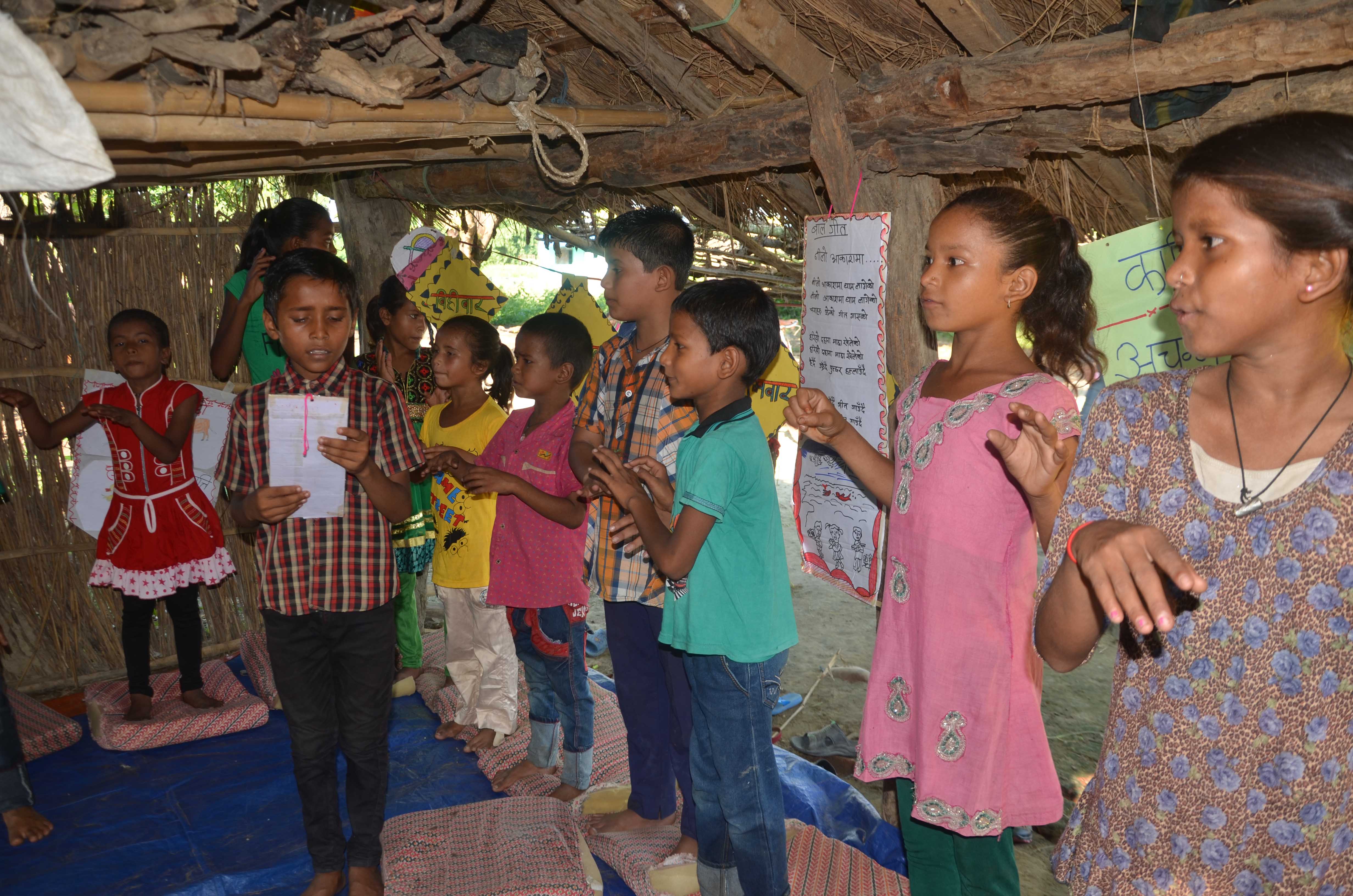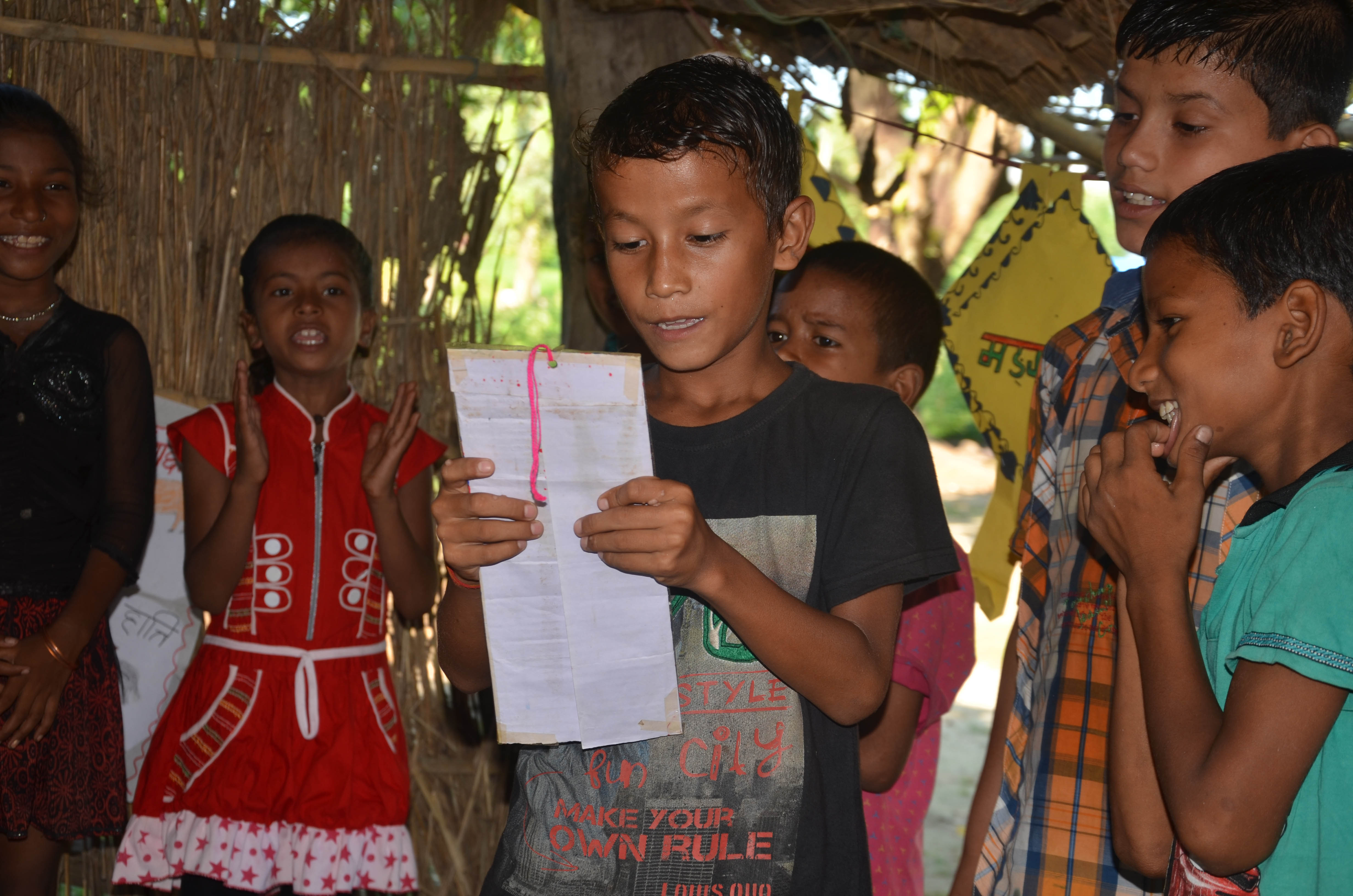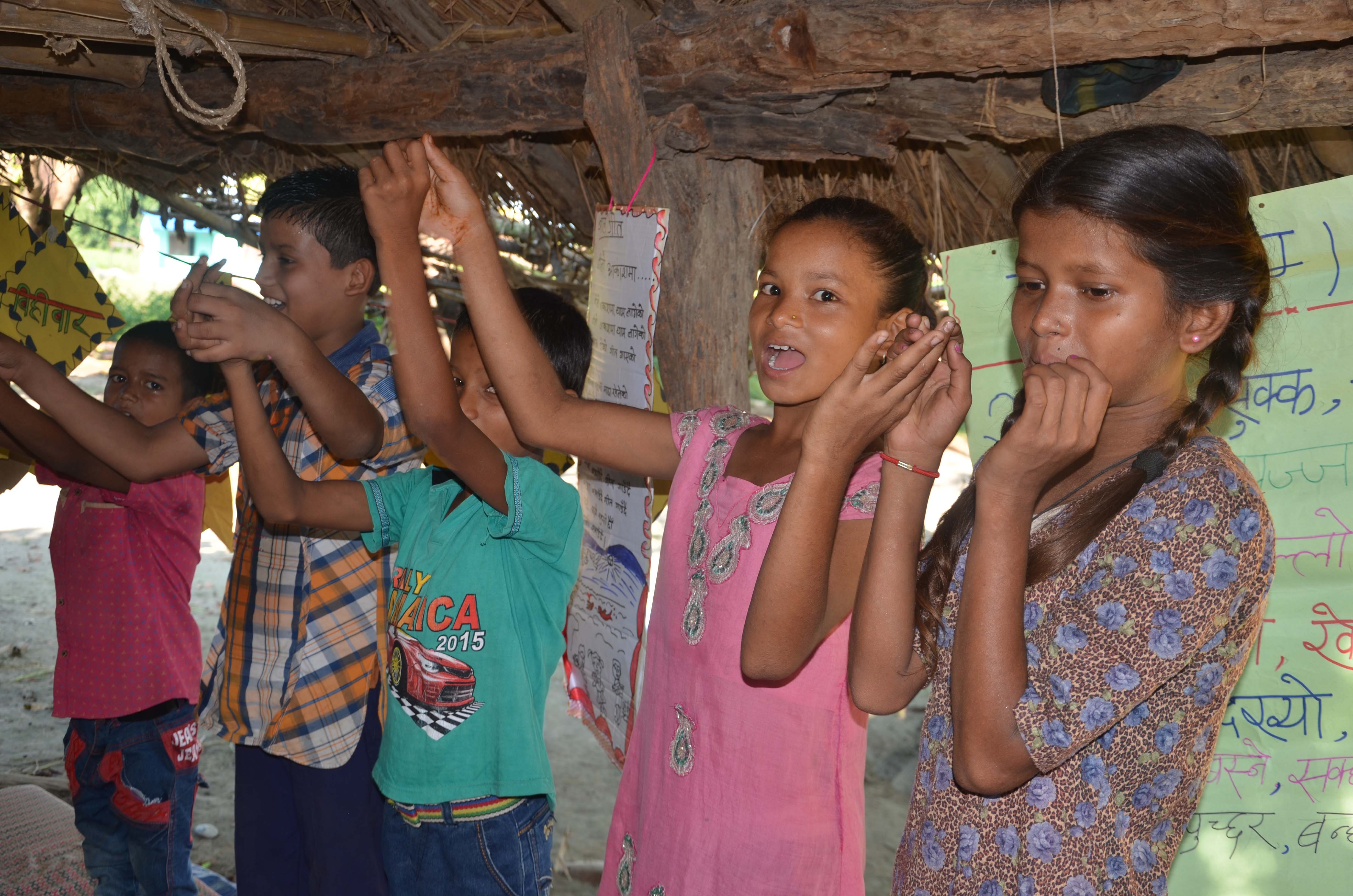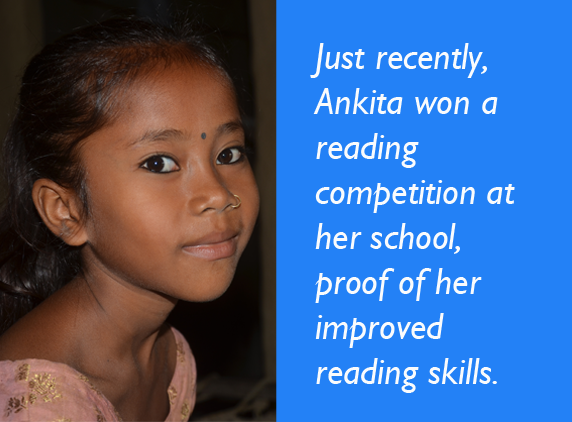Helping children to read
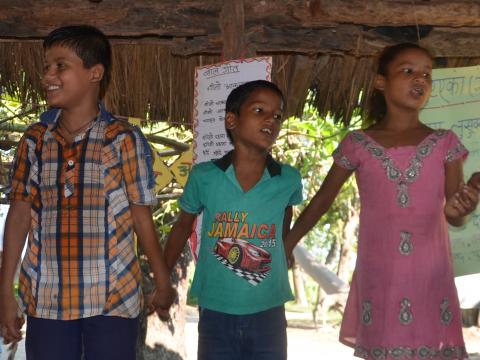
Much like other children in her community, 9-year-old Ankita is generally quiet. When Ram Pati Chaudhary and I walk into her house, a small mud structure with a thatched roof Ankita comes to Ram Pati and holds her hand, her doe-eyes fixed on Ram Pati.
Ram Pati is a local community volunteer who has been trained and facilitates the reading camp set up with the support of World Vision in Kailali. Ankita has been attending the camp for the past thirteen months and has grown fond of her facilitator.
World Vision, in partnership with Save the Children, began implementing the Literacy Boost programme in Kailali in February 2015 to improve the literacy of public schoolchildren, which is below 50% according to Ministry of Education Flash I Report, 2015/16. The interventions included teacher trainings, community reading activities, and provision of age-appropriate locally-relevant reading materials, to support emergent and foundational literacy skills among early-grade children. The reading camp is an initiative to engage children with low learning achievement in community reading activities.
Every Saturday, Ankita wakes up early, gets ready and makes her way to the camp, along with her friends. There they hang up artistic learning materials made out of local resources and for the next 90 minutes the facilitator leads them in activities such as dancing, singing, or poem recitals which reinforce what they have learnt in school during the week.
“I enjoy the reading camp more than I do at school. I actually remember what I learn there as it is so much fun!” she says.
These camps are doing more than just making learning fun for children. Based on the project’s Endline Survey Report, 2016 there has been a 43% increase in camp-goers who can read with comprehension as compared to only 8% at the time of project initiation, most significantly among girls.
According to Ram Pati, “When we had just begun, I noticed there was a gap between what children should be learning by middle school and what they were actually accomplishing at school. This gap has been bridged to a certain extent as we emphasise learning to close the literacy gap. As of now, children who did not recognise the alphabet earlier are able to read fluently. For children to learn better, it is important for parents, teachers and anyone who is involved to show interest.”
Apart from activities based in the camp, children are also encouraged to borrow books that have been developed by World Vision to help the children improve their reading skills. Out of all the books she has borrowed until now, Ankita has a favourite, ‘Mohana Nadi’, she proudly announces, “The cover of the book fascinates me; it consists of two boys rowing a boat in a river.” Occasionally, she also reads the books to her mother, Raj Kumari, who likes learning from her daughter. “I have noticed how Ankita’s interest in reading has increased since she started attending the reading camp. Although Saturdays are supposed to be holidays, she loves to go and learn with her friends,” she says.
Taking me around her house to show me her artwork from the camp, Ankita beams as she points at her collection of art stuck on the wall. “I do not stick my art outside because I’m scared they might tear when it’s windy or raining,” she says.
Children’s learning outcomes depend on children’s ability to read with comprehension. Therefore, World Vision has been focusing its intervention on increasing the reading skills of children.
